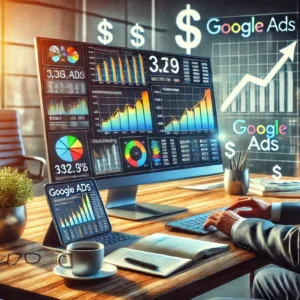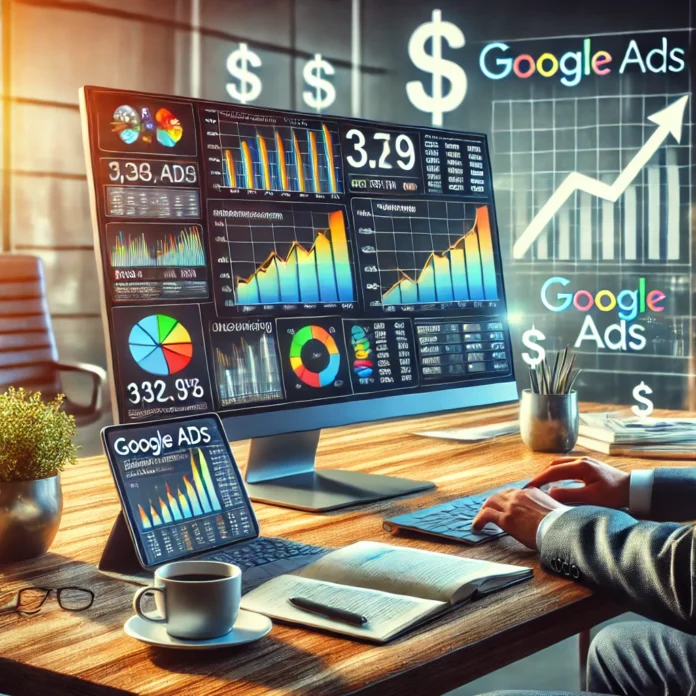 In the digital age, taking full advantage of your advertising budget is essential, and Google Ads emerged as a powerful tool for maximizing your reach. One of the key features that Google Ads offers is its ability to precisely target audiences based on their interests, demographics, and search behaviors. Imagine being able to showcase your products or services to a potential customer at the exact moment they are searching for what you offer—this is where the magic of Google Ads comes into play.
In the digital age, taking full advantage of your advertising budget is essential, and Google Ads emerged as a powerful tool for maximizing your reach. One of the key features that Google Ads offers is its ability to precisely target audiences based on their interests, demographics, and search behaviors. Imagine being able to showcase your products or services to a potential customer at the exact moment they are searching for what you offer—this is where the magic of Google Ads comes into play.
New websites are popping up that use artificial intelligence to streamline the ad creation process. These platforms can analyze vast amounts of data to determine the most effective keywords and ad formats for your target market, assisting you in maximizing your advertising spend. Not only do these AI-driven tools enhance the creative process, but they also optimize bidding strategies, ensuring that your budget is being used as efficiently as possible.
Moreover, as technology advances, we see an increasing reliance on machine learning to predict which ads will perform better based on historical data. This innovative approach allows businesses to stay ahead of the curve, continually adjusting their strategies in real-time.
“The future of advertising lies in understanding and leveraging data to connect with consumers in meaningful ways.”
While the advantages are plentiful, navigating the vast landscape of Google Ads requires some thought and strategy. Consider experimenting with A/B testing for your ad campaigns—this allows you to compare different ad variations to see which resonates more with your audience. Many new AI websites can even automate this process, providing insights and suggestions to enhance performance.
The question then arises: Are you ready to tap into these emerging tools and techniques to elevate your advertising game? Forums and communities have sprung up around this topic, discussing everything from algorithm changes to emerging AI tools that are reshaping the marketing landscape. Now is the time to dive into this exciting world and explore how you can leverage Google Ads alongside AI to get the most out of your campaigns.
Key strategies to enhance ad performance
To truly enhance your advertising performance with Google Ads, it’s essential to adopt a multi-faceted approach that combines creativity, technology, and data analysis. One of the key strategies involves leveraging audience segmentation more effectively. Rather than casting a wide net, focus on creating tailored ads that resonate with specific groups. New platforms now facilitate this process by utilizing AI to analyze user behavior and preferences, allowing you to deliver highly personalized content that captures attention and drives engagement.
Another potent technique is optimizing ad copy. Strong, compelling copy can significantly influence click-through rates and conversions. AI tools can analyze top-performing ads and suggest adjustments to your messaging based on trends and user responses. For instance, experimenting with different calls to action can reveal what language inspires your audience to act. Think about it: a small tweak in wording could make a substantial difference in your advertising spend effectiveness.
| Ad Element | Traditional Approach | AI-Driven Approach |
|---|---|---|
| Targeting | General demographics | Behavioral & interest-based |
| Copywriting | Static messaging | Dynamic, data-informed |
| Bidding | Manual adjustments | Automated real-time optimization |
Additionally, investing in remarketing strategies can further boost your ad performance. By re-engaging users who have previously interacted with your content, you capitalize on established interest. AI tools help streamline this process by identifying the right moments to serve ads, ensuring they reach users when they are most likely to convert.
As you consider these strategies, challenge yourself and your team to think outside the box. Does your current Google Ads strategy reflect the evolving needs and behaviors of your audience? Engage in community discussions or check out webinars that dive deep into emerging trends in automated marketing. The landscape is shifting, and your proactive engagement with these changes can open doors to unprecedented opportunities in maximizing your ad campaigns.
Measuring return on investment in advertising
Measuring return on investment (ROI) in advertising is critical for understanding the efficacy of your campaigns and ensuring that every dollar spent translates into viable business outcomes. With Google Ads, this insight is within reach, thanks to its sophisticated tracking tools that give a nuanced view of how users interact with your ads across different platforms. By establishing clear metrics for success, you can pinpoint what’s working and what isn’t, enabling you to make data-driven decisions to enhance your overall advertising strategy.
But how do you precisely measure ROI in such a dynamic environment? Start by implementing conversion tracking across your campaigns. This involves setting up specific actions you want users to take—be it a purchase, a newsletter sign-up, or a download. These actions, known as conversions, are then tracked back to your Google Ads efforts, giving you a clear picture of their effectiveness. The beauty of using AI-enhanced platforms lays in their ability to dive even deeper into this data, offering predictive insights that help you understand potential consumer behaviors before they happen.
Furthermore, Google Ads provides tools like the Customer Acquisition Cost (CAC) calculator, which is pivotal for calculating your advertising spend against the revenue generated from those ads. Understanding the CAC helps in assessing whether your marketing spend aligns with customer lifetime value, a crucial metric for any growth-oriented business. You want to aim for a balance where your investments are reasonable compared to the returns they provide.
| Metric | Definition | Importance |
|---|---|---|
| Conversion Rate | Percentage of users who complete a desired action | Indicates the effectiveness of your ad in driving actions |
| Customer Lifetime Value (CLV) | Total revenue expected from a customer over their relationship with your brand | Helps determine the maximum amount you can spend on acquiring customers |
| Return on Ad Spend (ROAS) | Revenue generated for every dollar spent on advertising | Calculates the direct profitability of ad campaigns |
By continuously measuring these metrics and leveraging AI-driven insights, you can adjust your campaigns not just reactively but proactively. A/B testing can also be employed here, providing real-time feedback on the most effective ads. Imagine the potential if you could pinpoint the variables that lead to increased engagement or conversions? These insights not only refine current campaigns but can also inform future strategies as you develop a keen awareness of your audience’s preferences.
“What gets measured gets managed.”
As your understanding of ROI grows, think about the broader implications of your advertising strategies. Are you just meeting short-term goals, or are you building sustainable brand loyalty? Each campaign is an opportunity to gather insights that feed into the larger narrative of your marketing strategy. Embrace the complexity of this measurement and keep pushing the limits of what’s possible with Google Ads. The insights gleaned can propel you forward, transforming how your business leverages its advertising spend for maximum impact.

